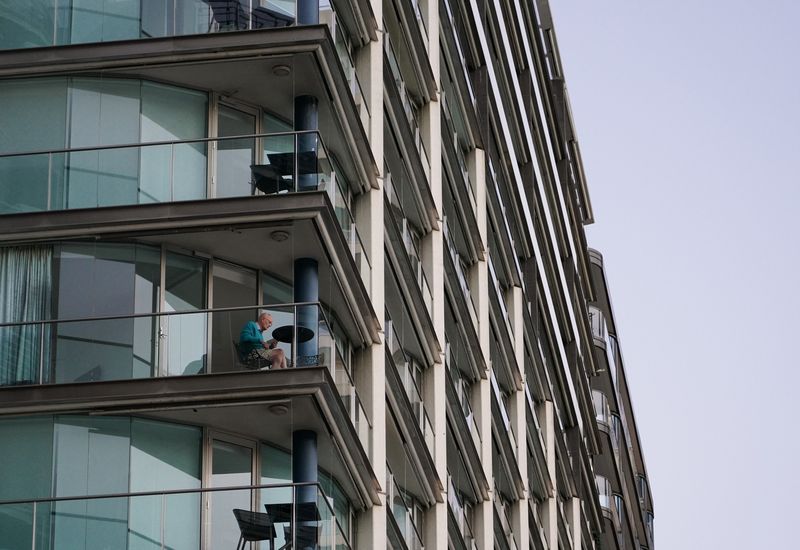By Stella Qiu
SYDNEY (Reuters) - The post-pandemic slump in Australian housing is set to deepen next year as hundreds of billions of dollars of mortgage debt fixed at record low rates in 2020 and 2021 mature, forcing borrowers to refinance at punishingly high interest rates.
Repayments on an estimated A$370 billion ($245.79 billion) of home loans could spike by as much as two-thirds at a time when real incomes are already shrinking due to surging inflation, dealing a body blow to house prices and the economy's main engine of growth - consumer spending.
Home values in Sydney have fallen 12% so far this year and Eliza Owen, head of Australian research at property consultant CoreLogic, expects further losses as more distressed properties are listed for sale.
"While most borrowers are expected to be able to continue servicing their mortgages, there could be more motivated selling, if mortgage arrears rise from record lows," said Owen.
Homeowner Francesca Lemon knows the pain – repayments on her variable-rate mortgage have already risen by A$1,200 per month this year, forcing her back to work despite a long-term medical condition so that her family can keep up with debt.
"It's very frustrating and people are already struggling to survive. The cost of paying your mortgage is literally going up for everyone by thousands of dollars," said the 31-year-old Lemon.
Australia's big four banks - Commonwealth Bank of Australia (OTC:CMWAY), Westpac, National Australia Bank (OTC:NABZY) and ANZ - account for 75% of the country's mortgage market.
The Reserve Bank of Australia (RBA) has raised interest rates every month since May, taking them from an all-time low of 0.1% to a decade-peak of 3.1%.
Policy makers are all too aware that mortgage payments will surge to record highs next year when fixed rate loans expire, and cited it as one reason for being the first major central bank to slow the pace of tightening.
The RBA fears 15% of the borrowers on variable rates could see their cash flows turn negative, assuming that interest rates rise to 3.6% in line with market expectations.
'BLOODY TOUGH'
Lemon has managed to obtain a lower rate from another lender last month, helped by a surge in competitive refinancing demand. Yet, those who bought at the peak of the market could well slip into negative equity and be left with no other option but to sell.
Buyers' agent Lloyd Edge says some cautious mortgage holders have been selling up before their fixed-rate loans expire.
"I think there's going to be a lot of other people where this is going to be the situation, but they don't realize it yet."
Hundreds of thousands of Australians took advantage of the ultra low rates during the COVID pandemic to enter one of the world's least affordable housing markets.
Fixed-rate loans - usually with a two or three-year maturity - accounted for over 40% of the new loans during COVID, up from 15% previously.
The rate hikes already delivered will add around A$1,000 a month in repayments to the average A$600,000 mortgage, a deadweight for a population that holds A$2 trillion ($1.3 trillion) in home debt.
There has yet to be a material pick-up in mortgage arrears thanks to savings buffers built up through the COVID pandemic, strict stress tests on loan applications, and the usual lag of two-three months for rate hikes to filter through to the economy.
However, surveys are showing signs of borrower stress with consumer confidence at lows usually only seen during recessions. Research firm Roy Morgan expects one in four mortgage holders will be at financial risk by January.
Leesa Gasparin, a 55-year old resident in Tasmania, now contributes a quarter of her income of about $4,000 a month to her rising mortgage.

"I know it's probably not a lot of money to some people, but it is to me. It's like everything with groceries, power and all that. It is really bloody tough."
($1 = 1.5053 Australian dollars)
